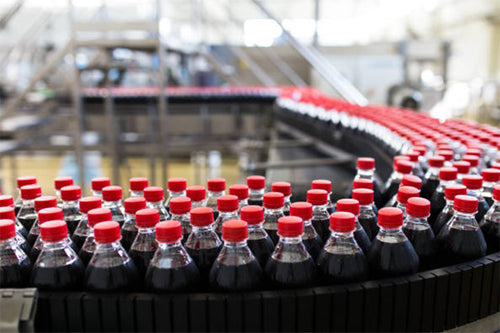A facility-wide safety upgrade
Based upon Riteknife's on-site safety knife evaluation, our experts found that this Global beverage company was using disposable knives to cut corrugated cardboard, stretch wrap, plastic banding, tapes, and gaylords. The blade angle of these knives did not allow for easy cutting of these materials. Additionally, the fact that these were disposable knives made the program quite costly, a chore to recycle correctly and not good for the environment. A more durable knife, with a replaceable blade, was needed.
Our recommendation was the Riteknife CB100 concealed blade safety knife. The CB100's Flowthrough Technology™ minimizes friction by lowering the force needed for cutting. One of its key features is an optimal blade angle to eliminate harmful repetitive motion injuries.
The CB100 is a safety knife built to last and features tool-free blade change functionality to access the two-sided blade. The integrated magnet safely secures the blade during the changing procedure.. This safety knife also has a box top opening lip on one end and a tape splitter on the other to maximize the longevity of each blade.

Elsewhere in the facility, 3/4 inch thick gaylord containers were being cut. This thick material is often difficult to work with and can be dangerous because of the amount of force needed to perform the task. Riteknife recommended these areas of the facility use a Riteknife AS100 Auto Retractable Safety Knife, which is equipped with a fast-acting blade guard to prevent lacerations, and a patented, easy tool-free blade change.
Riteknife safety specialists also recommended the Riteknife AP100 Safety Holster, which safely holds both the CB100, the AS100, spare blades, and multiple writing instruments. The end customers, the people using these new safety knives, absolutely love these holsters because they now have everything they need to do their job right on their hip which makes their jobs more efficient.
Training
Riteknife's safety knife evaluation began by identifying every tool and task performed in each area of the facility. Our safety specialists then met with select personnel (the “Safety Heroes”) to train them on how to use our knives as well as how to change and dispose of their blades.
he AS100 and CB100 were used in their workflow for 3 weeks as the first stage of a pilot program—ensuring the facility had on-the-ground personnel who were knowledgeable and excited. Meanwhile, we created customized videos, posters for display, and checklists safety managers could use to ensure every person completed training. This rigorous training program made positive change at scale ultimately come to fruition.


